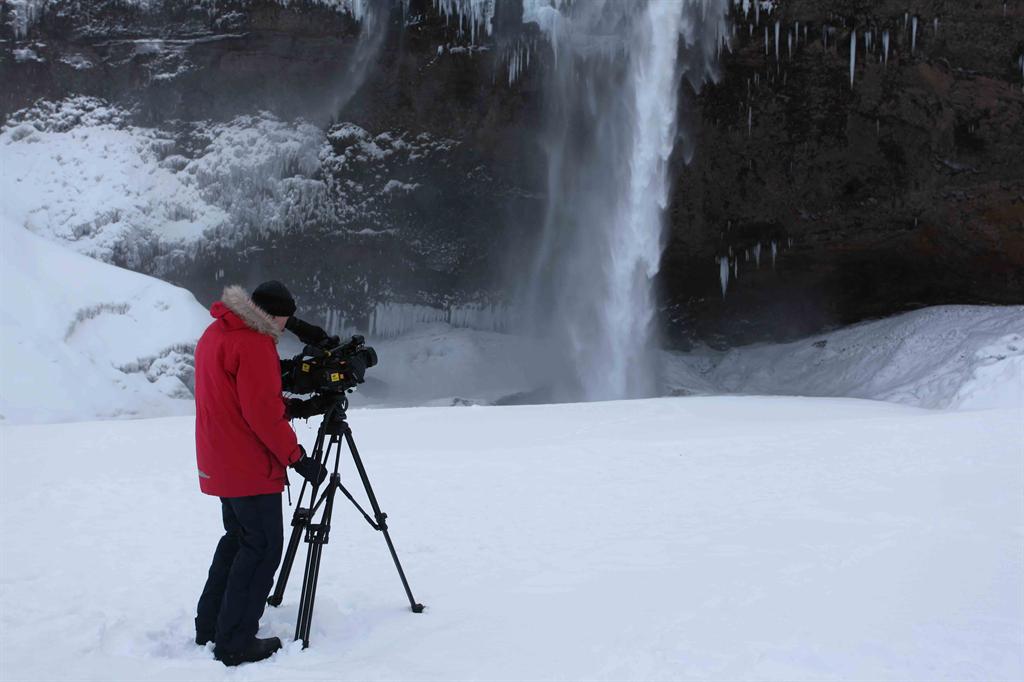Gear on the Go 2012

PAG professional batteries are impervious to water.
SEATTLE—Hurricane Sandy, with its water and power outages, was a reminder that even news shooters who live outside the traditional paths of deadly weather events have to be prepared for the “100-year storms” we now seem to be having on a regular basis.
News gear makers and some of their customers shared their thoughts with TV Technology about equipment that can stand everything Mother Nature can throw. Some professionals who appreciate these weatherproof productions tools don’t wait for extreme conditions to come to them… they go into them willingly.
BATTERIES & LIGHTING
A lot of Frezzi battery and lighting gear was used to cover Sandy, according to Jim Crawford, president of Frezzi Energy Systems in Hawthorne, N.J. “We got glowing reports about our HyLight from equipment TV personnel,” he said. “It’s the only professional SSL with a quick change LED Array Power Module and is fully adaptable to all portable field lighting applications. They were powered by our Frezzi FLB-100 On Board Lithium Batteries as supplied in the Frezzi Hylight Kits which come as Dual or Triple Head Kits.”
Kyle Dann, sales supervisor at Anton/Bauer’s Product Specialist Group, said “When you’re in an intense ENG situation, you want to make sure your rig is not only powerful enough to withstand a long day of shooting, but also waterproof and lightweight to keep you on the go in unusual circumstances.” He pointed out the A/B’s DIONIC series batteries, including the DIONIC 90, HC and HCX, can be used to counter a multiday power outage like Sandy presented with the company’s Solar Panel solution for battery charging.
David Hardy, technical director at PAG Ltd., pointed out the PAG batteries are impervious to water, and are “only adversely affected by extreme cold [below –20°C] or extreme heat [above +45°C].” Sandy presented neither of those extremes. In a general case he pointed out that “halogen camera lights are only safety rated for indoor use, but the Paglight LED is fine in bad weather.” He noted that when a news shooter does find a source of power for charging his batteries, “the PAGlink Micro Charger is ideal because it can be easily carried in a pocket.”
Vinten tripods are popular among shooters working in extreme conditions. Jonah Matthewson, co-owner of Bristlecone Media, in Corona, Calif., works as a cinematographer, director and writer and often shoots in conditions where electrical power is not only out, but has never been available, like Devil’s Hole, a natural cave in Death Valley National Park in Nevada.
Matthewson used the color temperature agile Litepanels Croma in the cave. “I could adjust the Croma to match the available light and white balance, or dial the Croma to a different color balance, which made the natural light even more mysterious,” he said. As for more work-a-day shoots, he’s used the Croma in hospitals, “where the type of available light changes from fluorescent-lit hallways to specialty lighting in examining rooms.” He’s able to quickly match the color of the light that’s thrown at him.

CAMERA SUPPORT
Alister Chapman was shooting a documentary on storm chasers for National Geographic in 1999 when he discovered that most of the extreme weather stock footage then available was limited and often home video. “The content is very dramatic, but technically the quality is poor. The following year I started travelling around the world shooting extreme weather.”
He’s found that the challenge for camera support equipment in these types of harsh environments is not just in wear and tear, but the need to be absolutely steady. “Any vibration in the wind will make the image soft,” he explained. “I bought my first Vinten tripod in 1989, and I still have it.” Portabrace covers are used by all four major broadcast networks and numerous cable networks and production firms. Tobias Keuthen, global brand manager for Sachtler, pointed to the need for fluid heads to deliver the same performance at any ambient temperature. With Sachtler’s Video 18 S1 and Video 20 S1, “you won’t ever sense any difference while working in –40 °C with a chilly breeze, or +50 °C with sand and dust all over. Even salt water cannot affect the performance of our equipment.” He noted Sachtler’s tripods “are rock solid, even in very stormy shooting conditions.”
Storms like Sandy aren’t the only source of water heading sideways. Production Sound Mixer Scott Harber, while working on the film “Wilfred,” was with the crew shooting in and out of boats and at a windy saltwater marina. “The Lightweight Audio Bag and Deca Sound Man Rain Poncho saved me,” he said. “I was completely self-contained, recording and mixing gear at my fingertips while I kept the gear dry from the overspray of salt water.”
When it comes to extreme conditions, producer and director Rob Gardner’s thank-you letter to bag maker Portabrace speaks volumes about how important gear protective cases were on his Antarctic expedition for the production of an episode of the PBS science series “NOVA.”
“At one point, when the weather closed in and the helicopters could not get in to get us out, the entire equipment package had to be abandoned, and we hiked back to the base camp four hours away across open country,” Gardner wrote. “The equipment, inside the Portabrace cases, was placed in survival tents and weighted with rocks against the tremendous winds… this was in the Dry Valleys, where the winds can reach 200 mph. After an overnight without the chemical heaters, the lenses were a little stiff, but we retrieved the entire package without the smallest problem, safe and sound in the blue nylon cases.”

Get the TV Tech Newsletter
The professional video industry's #1 source for news, trends and product and tech information. Sign up below.
